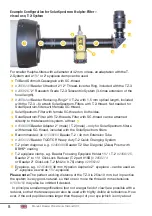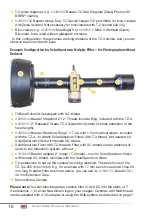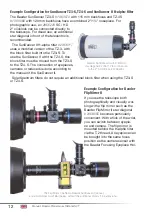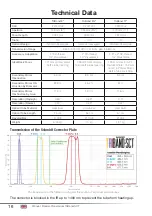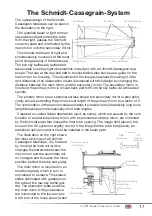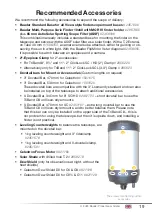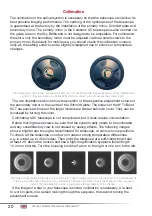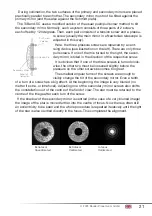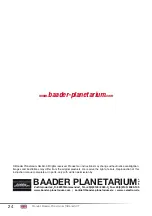
© 2023 Baader Planetarium GmbH
21
During collimation, the two surfaces of the primary and secondary mirrors are placed
practically parallel to each other. The secondary mirror must not be tilted against the
primary mirror (and thus also against the Schmidt plate).
The TriBand-SC uses a modified version of the usual push/pull screw method to tilt
the secondary mirror. Normally, such a system consists of three pairs of 2 screws,
each offset by 120 degrees. Then, each pair consists of a tension screw and a pressu-
re screw (usually the main mirror in a Newtonian telescope is
adjusted in this way).
Here, the three pressure screws are replaced by a cent-
reing device (see illustration on the left). There are only three
pull screws. If one of them is turned to the right, the secon-
dary mirror is tilted in the direction of the respective screw.
It is obvious that if one of the three screws is turned clock-
wise, the other two must be loosened slightly before the
pressure on the other screws becomes too great.
The smallest angular turns of the screws are enough to
visibly change the tilt of the secondary mirror. Even a tenth
of a turn of a screw has a big effect. At the beginning, the image is very blurred (no
matter if extra- or intrafocal). Adjusting one of the secondary mirror screws also shifts
the constellation out of the centre of the field of view. The star must be returned to the
centre of the image after each turn of the screw.
If the shadow of the secondary mirror is centred (in the case of a very blurred image)
the image of the star is moved further into the centre of focus. Now there is often still
an eccentricity to be seen and the whole procedure is repeated iteratively until the light
of the star is also centred directly in the focus. This completes the alignment.
Extrafocal
Extrafocal
In focus
Uncollimated Collimated Collimated
Pull Screw
(3 pieces)
Secondary Mirror
Schmidt
Corrector
Central Pin


